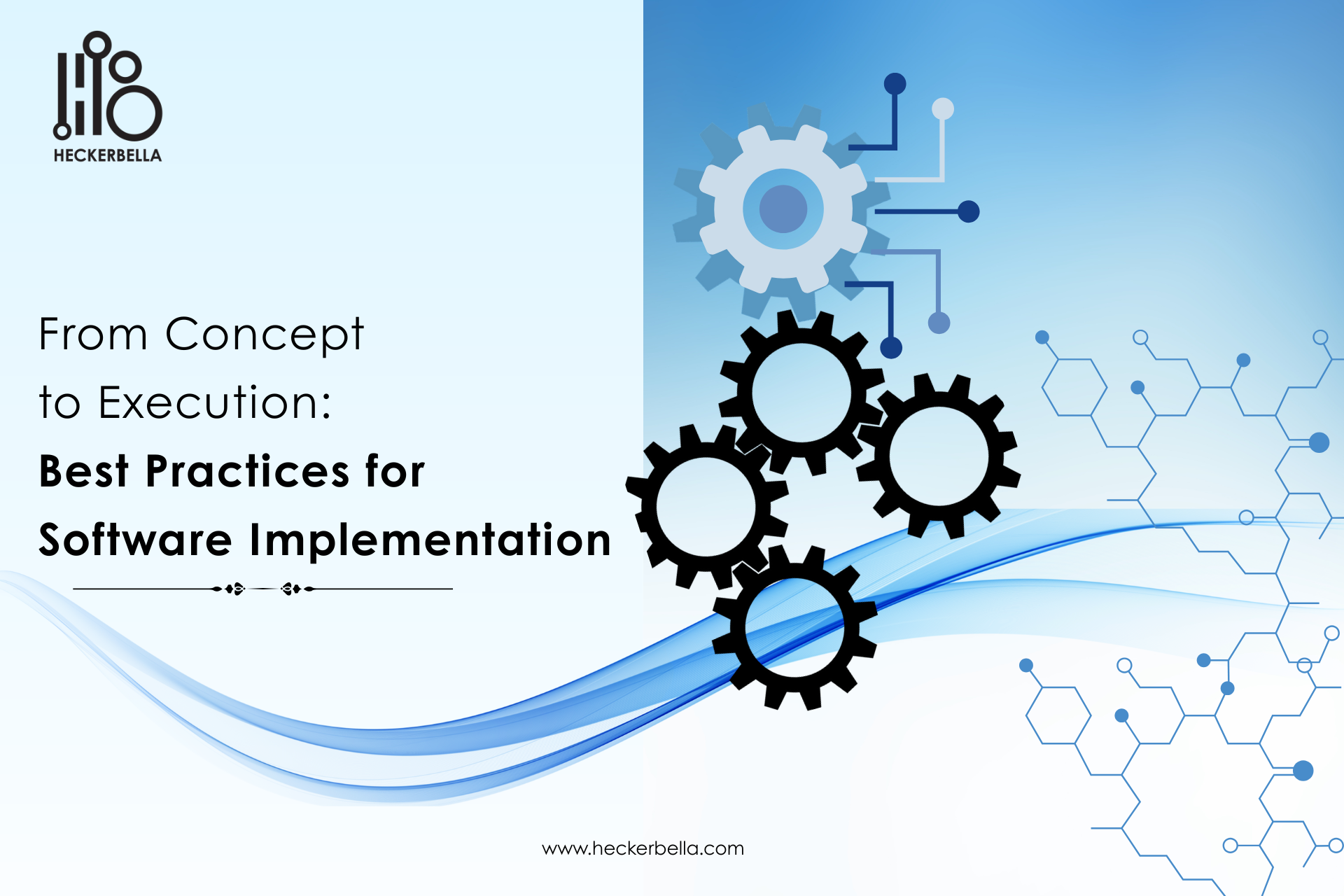From Concept to Execution: Best Practices for Software Implementation

Successful software implementation isn’t just a technical task — it’s a strategic move that can redefine how an organization operates, competes, and grows. Imagine launching a new system only to realize too late that key departments weren’t aligned, users weren’t trained, and no one was quite sure what ‘success’ looked like. We’ve seen businesses with incredible ideas lose momentum because execution fell apart in the details — unclear scope, mismatched technology, and lack of real stakeholder engagement.
On the flip side, we’ve also witnessed transformations where clarity, collaboration, and good planning turned complex projects into powerful drivers of innovation and value. This guide is built on those experiences. It’s a roadmap for teams looking to turn bold ideas into sustainable, high-impact software solutions.
Set Clear Goals or Prepare to Fail
Before writing a single line of code, define what success looks like — not just technically, but strategically. What business value are you aiming to create? What does a successful rollout mean to different stakeholders? A clear, shared vision lays the groundwork for better decision-making, more effective planning, and stronger collaboration across technical and non-technical teams alike.
- Identify the specific business problem you aim to solve.
- Engage stakeholders early to align expectations.
- Set realistic goals, timelines, and measurable KPIs.
Pick Tech That Works for You — Not Just What’s Popular
Technology should be an enabler, not a barrier. Selecting the right tech stack requires a clear understanding of both current operational needs and long-term strategic goals. It’s not about choosing the trendiest tools, but those that deliver performance, flexibility, and potential integration. Your tech decisions today should support rapid iteration, seamless collaboration, robust security, and the ability to evolve as your business grows and market conditions change.
- Research and evaluate frameworks, tools, and infrastructure options.
- Prioritize compatibility with existing systems and future goals.
- Document your choices to support future upgrades and maintenance.
Build It Right, From the Ground Up
A strong development foundation is key to scalability and security. Follow established standards to avoid messy code, bugs, and inefficiencies.
- Write clean, maintainable, and well-documented code.
- Use Agile or DevOps methodologies for iterative delivery.
- Implement version control (e.g., Git) and prioritize security best practices.
Test Relentlessly — Before Users Do
Testing isn’t optional — it’s a critical line of defense. It protects your users by ensuring the product works as intended, safeguards your brand’s reputation by catching errors before they reach the market, and secures your investment by preventing costly post-launch fixes and potential legal risks. Testing is not a stage to rush through — it’s where quality is built, and trust is earned.
- Unit Testing: Validate individual code components.
- Integration Testing: Ensure smooth interaction between modules.
- UAT: Confirm usability and performance with real users.
- Security Testing: Detect and patch vulnerabilities before they’re exploited.
Launch Smart, Not Fast
Deployment is more than a push-to-live moment. It’s a critical phase where all your planning and development efforts come together — or fall apart. A thoughtful rollout ensures that stakeholders are prepared, users are supported, and the system performs as expected in real-world conditions. By approaching deployment as a structured, multi-step process rather than a one-time event, organizations can reduce disruption, build user confidence, and encourage faster adoption of new systems.
- Communicate updates and changes to stakeholders in advance.
- Provide onboarding, training, and clear user documentation.
- Monitor performance in real time and offer fast support for issues.
Don’t Ship and Forget — Iterate & Improve
The best software evolves — it doesn’t stand still. Once your system is live, the real work begins. Collecting user feedback, tracking performance metrics, and identifying usability pain points are all parts of keeping your solution relevant and effective. Continuous improvement through incremental updates and security patches not only boosts user satisfaction but also ensures your system keeps pace with changing technological trends, business needs, and customer expectations. A proactive post-launch strategy turns your software into a living product that grows with your organization.
- Gather user feedback regularly to inform updates.
- Apply patches and enhancements proactively.
- Plan for scalability and align with changing business needs.
Conclusion
At Heckerbella, we don’t just deploy software — we co-create strategic solutions. Our approach combines business insight, technical expertise, and cultural alignment to help organizations deliver technology that truly works for their people and their goals. Whether you’re rolling out a new product, modernizing legacy systems, or scaling your operations, we bring structure, clarity, and innovation to every phase.
Ready to transform your next project into a success story? Contact us at www.heckerbella.com to get started.



